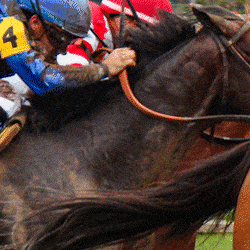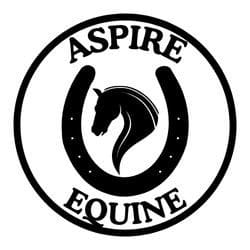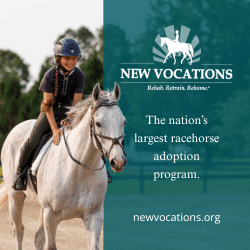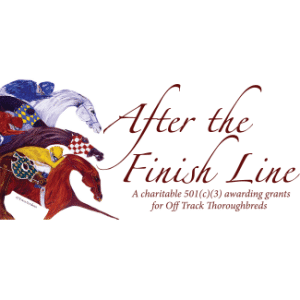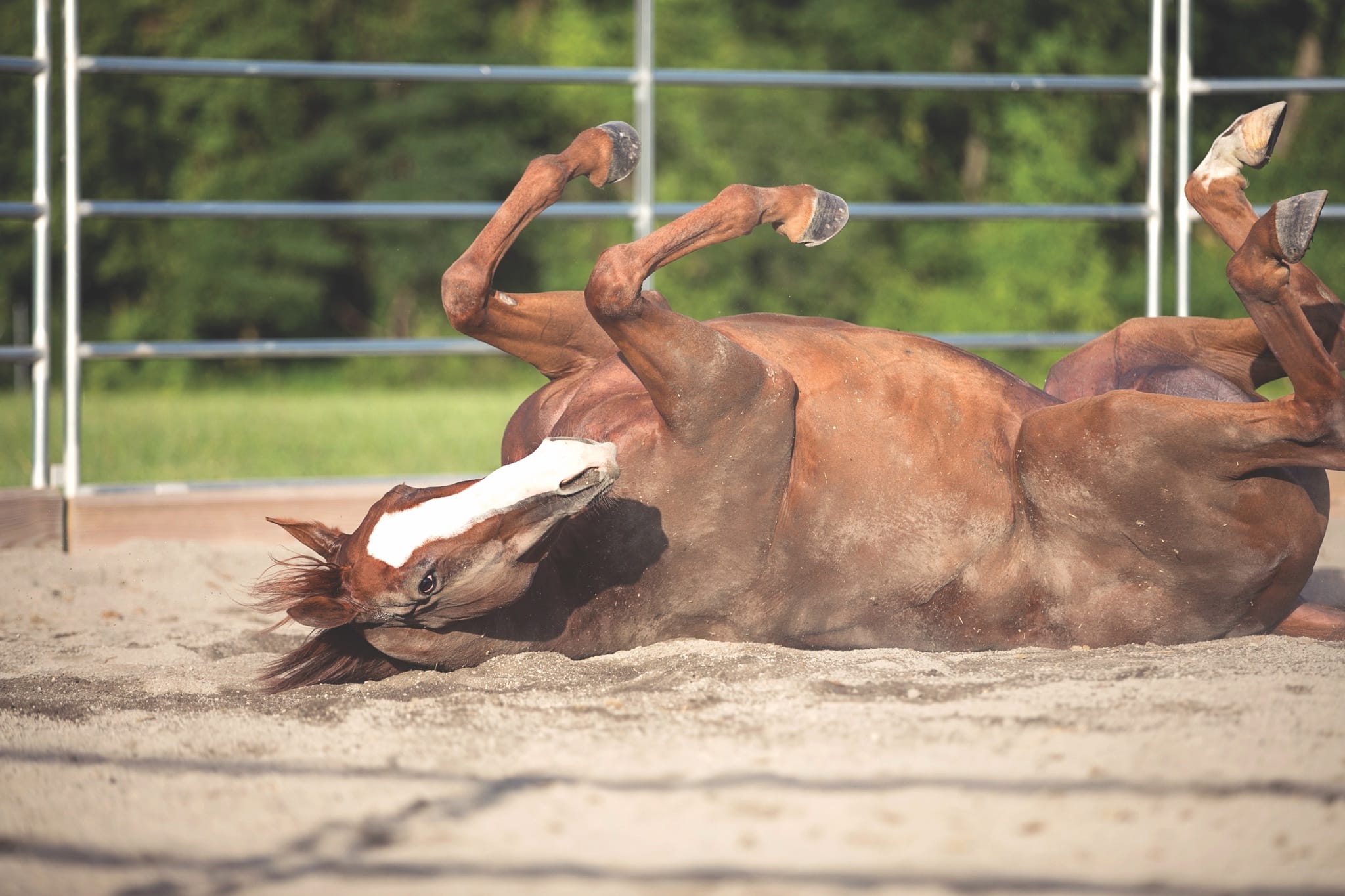
It’s rewarding to see horses return to normal activities during or after rehabilitation. Photo by Bethany P Photography
After what seems like the longest horse shopping spree ever, you’ve finally found the OTTB of your dreams … or so you thought. After you inquire about the horse, the seller tells you he is in the middle of a rehabilitation program for a soft tissue injury but is expected to make a full recovery. Despite the prediction he will have no future career limitations, you’re nervous to take on this project and, after all, there are no guarantees with horses.
Or maybe it’s the Thoroughbred you’ve had for nearly his whole life with no soundness problems, but one day he comes in from the pasture nearly three-legged lame. After a full veterinary examination you find out your horse fractured his coffin bone. The good news, your vet says, is with strict stall rest and slow rehabilitation, he might be able to return to work. But, you wonder, will it be worth the mental and physical toll the process will take on both you and your horse?
Horses might need rehabilitating after a variety of injuries, including those to soft tissue, such as a bowed tendon, or bone, such as a “popped” splint. Additionally, they often need rehabilitation following surgical procedures — for example, “tie-back” surgery — or after repair of severe wounds. How long rehabilitation takes varies based on the severity of the injury or invasiveness of the procedure, and many factors can influence the plan, from the expectations for the horse’s future career to the owner’s time commitments.
Creating a Successful Rehabilitation Plan for Your OTTB
If you believe your horse has sustained an injury or you are considering buying a horse with an existing or healing injury, it is very important to work closely with your veterinarian; he or she can make an accurate diagnosis and recommend an optimal rehabilitation plan.
Regardless of the injury, patience and time are two key factors for success when following a rehabilitation plan, says Hilary Irwin, owner of Hillary Irwin Eventing, in Ocala, Florida. “We have a very specific protocol we like to follow for rehabbing tendon/ligament/muscle injuries, and a major portion of that is once the initial rehabbing is complete and the vet has approved turnout, I am a huge believer in turning horses out.” If approved by your veterinarian, turning horses out after an injury can help rebuild their strength after a period of stall confinement.
She says her precise rehabilitation plan varies based on the injury, its severity and the veterinarian’s recommendations. However, the horse’s age and temperament play a notable role. A young, high-energy horse, for example, might be more likely to injure himself if kept to strict stall rest, especially if he is not used to being confined for long periods. The type of facility and time availability of the owner and staff might also affect the rehabilitation plan — a few hours of supervised turnout in a small paddock might not be feasible for all.
“Tailoring the rehabilitation plan to the individual horse and being willing to adjust that plan with regular veterinary checks is very important for success,” says Bonnie McRae, owner of After the Races, in Elkton, Maryland. Even in cases where they expect a straightforward rest and rehabilitation period, McRae has her veterinarian complete a recheck, including a lameness exam and imaging such as radiographs or ultrasound, several times throughout the process to ensure no changes need to be made to the protocol.
“If the horse is sounder than expected, we can move them along more quickly,” adds McRae. “Alternatively, some horses take longer than expected to come sound or for imaging to show the desired level of improvement, so we need to extend their plan or consider alternative treatments.”
Rehabilitation Success Story #1: Danehill Sunset
Irwin has managed many rehabilitation cases, but one of her greatest success stories was the OTTB gelding Danehill Sunset (Danehill Dancer [IRE] — Waratah [IRE], Entrepreneur [GB]) she took to her first Fair Hill International event, in Maryland. “He had a massive (40-45%) hole in his superficial digital flexor tendon when I got him, but when you don’t have the financial means to go buy horses, you start to figure out other ways you can make things work, and time was something I had,” says Irwin. “I did not ask to see the scans before I brought him home because that would have scared even me.”
The gelding had already completed stall rest when Irwin acquired him, so she continued with stall confinement and limited turnout in a small paddock for a few hours at a time after he arrived at her farm. This allowed her to slowly introduce him to turnout again, but with less risk than putting him in a large pasture. Once the veterinarian cleared him for regular turnout, the horse spent seven months on pasture before being rescanned to confirm Irwin could start riding him. “Much to everyone’s shock, it looked fantastic,” Irwin says. “There was zero evidence of scarring, and the fiber pattern looked fantastic.”
He went on to event at advanced for almost six years with Irwin without soundness issues.
Rehabilitation Success Story #2: Best Attack
Best Attack (Bahri — Best Offense, Defensive Play), one of McRae’s personal horses, was a graded-stakes-winning steeplechase horse whose career ended after he tore sesamoidean ligaments in both front limbs. “A lot of people are afraid of soft tissue injuries, but he is a perfect example of how well a horse can do when given sufficient time (for rehabilitation) without being rushed,” she says.
After 18 months of rehabilitation, including strict stall rest, hand-walking and grazing, and turnout for the final six months, Best Attack returned to work, beginning with low-impact trail riding to improve his fitness. After another six months, McRae started bringing him back into full work and jumping again. She went on to compete him through training level eventing before selling him to a young rider that took him to her first CSI* event.
“I had my vet check him every time we considered moving up to a new level, and each time he was cleared to go on without limitations,” she says.
Rehabilitation Success Story #3: Our Wild Wives
McRae took in Our Wild Wives (Flat Out — Wildwife, Wild Gale) at After the Races after the mare sustained a coffin bone fracture. “Her future was definitely uncertain when she arrived, being quite lame and with the injury too old for surgical repair,” she says.
She and her team of veterinarians and farriers took a chance on Our Wild Wives and created specialized shoes to help stabilize the fracture. “It took eight months of strict stall rest and more time gradually increasing work, but the fracture healed incredibly well,” McRae notes. “She was not expected to have any limitations at all after her recovery and is proving that to be true every day with her adopter, who actively shows her in the hunters.”
Take-Home Message
Rehabilitating horses always involves a bit of risk, but with time, patience and a clear, appropriate veterinarian-directed plan, many horses with old injuries can go on to have impressive careers. Irwin says there is a general misconception among horse people that equine athletes will be limited by a previous injury but, often, it is the talent of the horse or rider that limits the pair’s progress, long before the injury will.
“Do what you’re comfortable with, while remembering that a small injury, or many large ones, do not usually ruin a professional athlete’s career. (Rather,) it is the rush to get them back in the game that leads to re-injury and shorter careers,” she says.
Haylie Kerstetter, digital editor at The Horse, is a Pennsylvania native and lifelong horse owner. She competed in the 2019 Thoroughbred Makeover with her horse Warlander in Show Jumper and Dressage and now owns 2020 Makeover graduate Grand Teton, whom she hopes to develop as a jumper.

